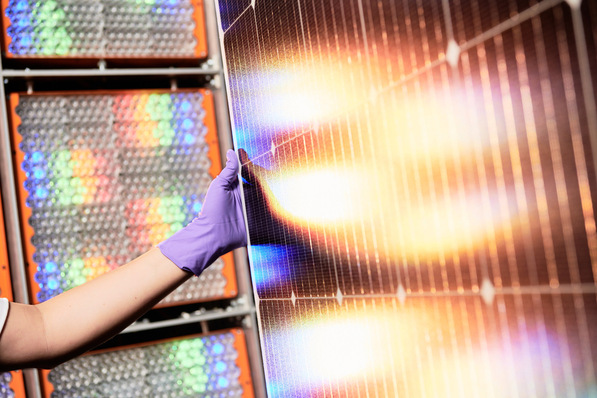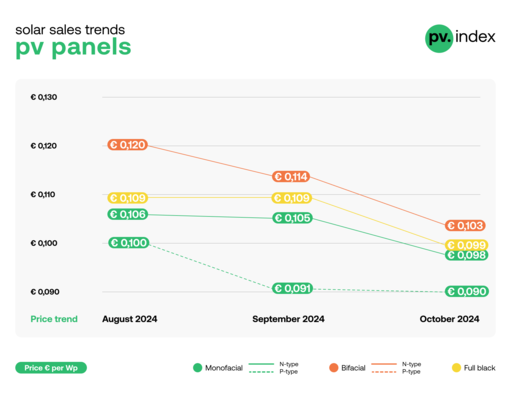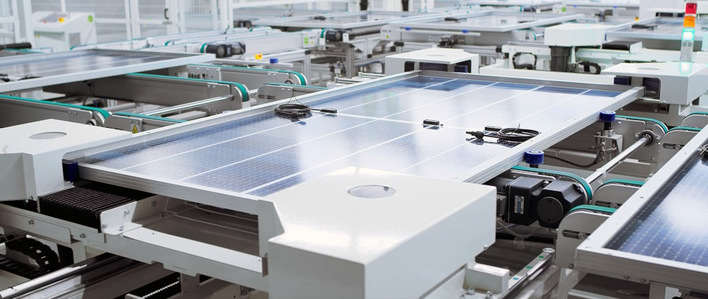Solar panels produce direct current voltage, and if connected to an electric circuit, they generate direct current (DC). For most devices and machines, direct current is not useful because they are designed to run on alternating current (AC). The power grids also run on alternating current. Converting direct current into grid-compatible alternating current is what inverters are for. They have the following functions:
Adjusting the voltage of 1,000 or 1,500 volts DC from the solar strings down to the (AC) grid voltage: European low-voltage grids run on a standard 220 volts (for single-phase power grids) or 400 volts (three-phase grids). In the US, Japan and various other countries it is 110 volts.
Depending on the size of the solar generator, inverters can also feed into the grid at medium-voltage (from one up to 40 kilovolts). The higher the grid voltage, the larger the transformer adjusting the AC voltage from the inverter needs to be. There also are solar parks that feed in at high voltage (over 110 kilovolts) using large-scale inverters and substations.
Adjusting the frequency of the alternating current to that of the grid (synchronisation): 50 hertz is the standard in Europe, 60 hertz in the US and Japan.
Optimising the solar yields from the panel strings by what is known as Maximum Power Point Tracking (MPPT). This involves always keeping the I-V curve of the solar voltage and the currents in the solar panels at maximum power and thus at maximum yield. For every connected panel string, the inverter has a separate MPP tracker.
Controlling the solar generator in case of an instability in the grid: Solar installations can assist in stabilising unstable power grids. If there is too much electricity in the grid (driving up voltage and frequency), the installation is taken offline. If the voltage or frequency is too weak, the solar generator feeds in at full capacity. If combined with a large storage battery, this grid-stabilising effect can be utilised to an even greater degree.
Inverters also take on the task of switching if the power grid suffers a short- or long-term break down. In combination with a storage battery, the solar generator can function as an uninterruptable power supply. That is important for commercial and industrial applications as well as in areas that are often effected by storms, flooding or other natural disasters.
Together with a storage battery the inverter can optimise the self-consumption of solar energy, so that only the surplus electricity is fed back into the grid. Or it controls a self-sufficient mini-grid which works fully independent of the public power grid.
Further, smart inverters allow directly using the DC from the solar generator to charge batteries (storage) or electric vehicles.
Inverters also include important functions for the technical protection of the solar installation (safeguarding against voltage surges, lightning, electric arcs as well as disconnecting in case of fire). Regulations may vary between countries. (HS)
Look at this, too:
Solar advice: Run ventilation and cooling on solar energy!
Stay informed, get our newsletter twice a week: Register here.
Solar inverters: keep up with the latest product news.
Find useful products for solar generation here.
Find useful products for solar energy storage here.
Find useful products for e-mobility here.







